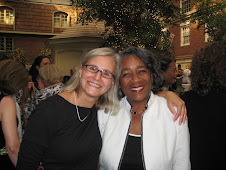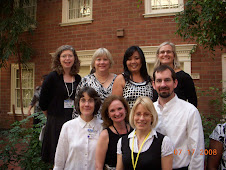Here is the description of the assessment from the student direction sheet:
Goals of the assessment:
- To demonstrate a sophisticated, in-depth understanding of the relationship between character motivation and themes in The Great Gatsby.
- To apply contemporary modes of expression to this novel of the 1920s.
- To flex your creative muscles. This is your opportunity to express your ideas in a creative format.
Final Work Product:
You will create either character recipes, Facebook pages, postcard secrets, or web logs for three of the main characters in The Great Gatsby. Your creative representations of the characters should reflect in-depth analysis of each character’s development throughout the course of the novel. Consider how these characters have or have not achieved the American Dream. Make sure you do not focus all of your efforts on creativity at the expense of meaningful analysis.You must complete the following pre-writing preparation:
- Select three main characters from The Great Gatsby.
- For each character, create a bubble map with at least 10 adjectives that describe your character. Consider social, emotional, psychological and physical aspects of the character.
- In the frame, for each adjective, provide a description of events or forces from the text that help to shape the character. Include at least 5 direct passages from the novel. For longer passages you may cite the beginning phrase and last phrase of the passage along with the page number.
Next, choose one of the following options for a final product:
Option 1: Character Recipe Cards
Writing the Recipe:
For each character, create a “recipe” that combines your character traits and bakes them into your character. The list of ingredients should include the character’s traits, and baking instructions should show how the plot events help shape the character. You must use at least 5 vivid, concrete verbs in baking instructions.
Revising: Stir. Add ingredients. Checks to make sure instructions are clear and in logical order. Stir some more and check appropriateness of verbs in baking instructions. Also, proofread recipe for spelling errors. Once you have it completely right, prepare your recipe for publication.
Publication:
Write out the complete recipe on a 4 x 6 note card. Decorate the card with symbols and images appropriate for this character.
Sample Recipe: Tragic Romeo Rolls
1 cup passion
½ cup anger
5 tablespoons love
1 teaspoon regret
2 pints confusion
3 pinches of family feuding
¼ cup revenge
4 drops blood red food coloring
Directions:
Gather all ingredients. Start with passion and love and mix family feuding deep into the middle of it. Beat until well blended. Heat the ½ cup of anger until it comes to a boil. Pour into the mixture. Next add the ¼ cup of revenge and stir until clumpy. Then stir confusion throughout the mixture. Pour into baking tins. Set oven at a searing 450 degrees. Bake overnight. After baking, top with seasoned regret, stain red with food coloring.
Result: One confused, and ultimately regretful, young lover.
Serves: Two wretched families who eventually learn to eat “Tragic Romeo Rolls” and “Passionate Juliet Cobbler” peacefully together.
Option 2: Facebook pages
For each character, create a Facebook page. As you create your page for each character, remember that you are trying to show your insights into this character’s development throughout the novel. Your page should portray an accurate overall representation of what this character would do, say, or think. What are the crucial conflicts and ethical dilemmas that this character faces?
Your pages need to show careful consideration of character motivation, relationships, and conflicts. Think about elements that will highlight personality well. Also think about appropriate symbolic images that you may wish to include.
Format these appropriately, either by creating the pages online and printing them or mimicking the format in your written work.
Option 3: Character Postcard secrets
Check out the website http://www.postsecrets.com/ (Warning: There are some very provocative confessions on this website.) This is a website that allows real people to offer confessions and secrets anonymously. Your mission is to create a postcard secret for three of the main characters in The Great Gatsby. Each postcard must include images and text.
Here are the rules, as detailed on the Post Secret website: “Each secret can be a regret, hope, funny experience, unseen kindness, fantasy, belief, betrayal, desire, feeling, confession, or childhood humiliation. Reveal anything—as long as it is true and you have never shared it with anyone before.”
Create a 4 x 6 postcard but stick to one secret per card. Choose secrets that fit the characters as developed in the novel and that are appropriate for a classroom setting. Put your complete secret and image on one side of the postcard. Be brief, legible, and creative. On the back of each postcard, write a paragraph, from the perspective of the character, that explains how or why the confession of this secret is vital to your existence. Using passages from the novel would strengthen these paragraphs.
Option 4: Character Blogs
Create a blog that includes a dialogue among at least 3 of the main characters in The Great Gatsby. You should write from the first-person perspective of the characters. Your blog should include images and formatting that shows your understanding of deeper motivations and dilemmas.
Each character must offer at least two, 1-2 paragraph long entries to the blog. So, you will have at least six entries in your blog. You may pose different questions that relate to important issues throughout the book, or use the blog to allow a character to offer thoughts not revealed in Fitzgerald’s text. How might the characters react to current events of 2008?
Be creative; however, first and foremost, make sure that your entries are true to the characters’ motivations, actions, and language throughout the novel. Your blog entries may include direct passages from the text incorporated into the characters’ comments; make sure not to let these dominate the entries.
Written Reflection
Once you have created your items, you must also complete the following reflection on the creations:
Write a one to two page (typed, double-spaced) reflection that answers the following questions:
How does the creative creation for each character demonstrate an analytical perspective on the character? What thoughts or ideas are revealed through each creation? Connect these creations to specific aspects of the text, using examples and/or cited quotations as support. You may wish to consider themes revolving around the American dream, rebellion, or other significant ideas the novel raises.






